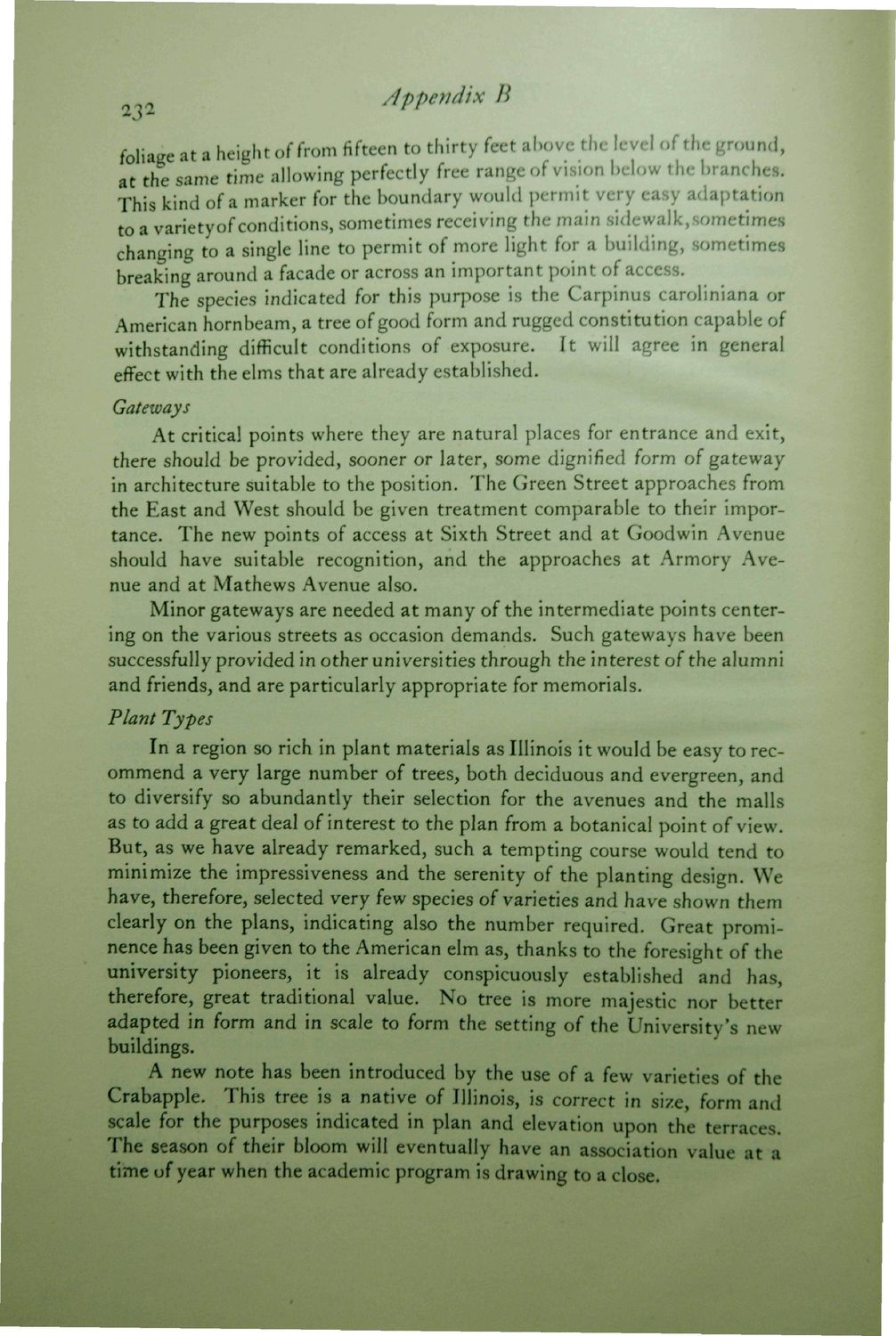| |
| |
Caption: Book - 30 Year Master Plan (Tilton & O'Donnell)
This is a reduced-resolution page image for fast online browsing.

EXTRACTED TEXT FROM PAGE:
Appendix B foliage at a height of from fifteen to thirty feet above the level of the ground, at the same time allowing perfectly free range of vision below the branches. This kind of a marker for the boundary would permit very easy adaptation to a variety of conditions, sometimes receiving the main sidewalk, sometimes changing to a single line to permit of more light for a building, sometimes breaking around a facade or across an important point of access. The species indicated for this purpose is the Carpinua caroliniana or American hornbeam, a tree of good form and rugged constitution capable of withstanding difficult conditions of exposure. It will agree in general effect with the elms that are already established. Gateways At critical points where they are natural places for entrance and exit, there should be provided, sooner or later, some dignified form of gateway in architecture suitable to the position. The Green Street approaches from the East and West should be given treatment comparable to their importance. The new points of access at Sixth Street and at Goodwin Avenue should have suitable recognition, and the approaches at Armory Avenue and at Mathews Avenue also. Minor gateways are needed at many of the intermediate points centering on the various streets as occasion demands. Such gateways have been successfully provided in other universities through the interest of the alumni and friends, and are particularly appropriate for memorials. Plant Types In a region so rich in plant materials as Illinois it would be easy to recommend a very large number of trees, both deciduous and evergreen, and to diversify so abundantly their selection for the avenues and the malls as to add a great deal of interest to the plan from a botanical point of view. But, as we have already remarked, such a tempting course would tend to minimize the impressiveness and the serenity of the planting design. We have, therefore, selected very few species of varieties and have shown them clearly on the plans, indicating also the number required. Great prominence has been given to the American elm as, thanks to the foresight of the university pioneers, it is already conspicuously established and has, therefore, great traditional value. No tree is more majestic nor better adapted in form and in scale to form the setting of the University's new buildings. A new note has been introduced by the use of a few varieties of the Crabapple. This tree is a native of Illinois, is correct in size, form and scale for the purposes indicated in plan and elevation upon the terraces. The season of their bloom will eventually have an association value at a time of year when the academic program is drawing to a close.
| |